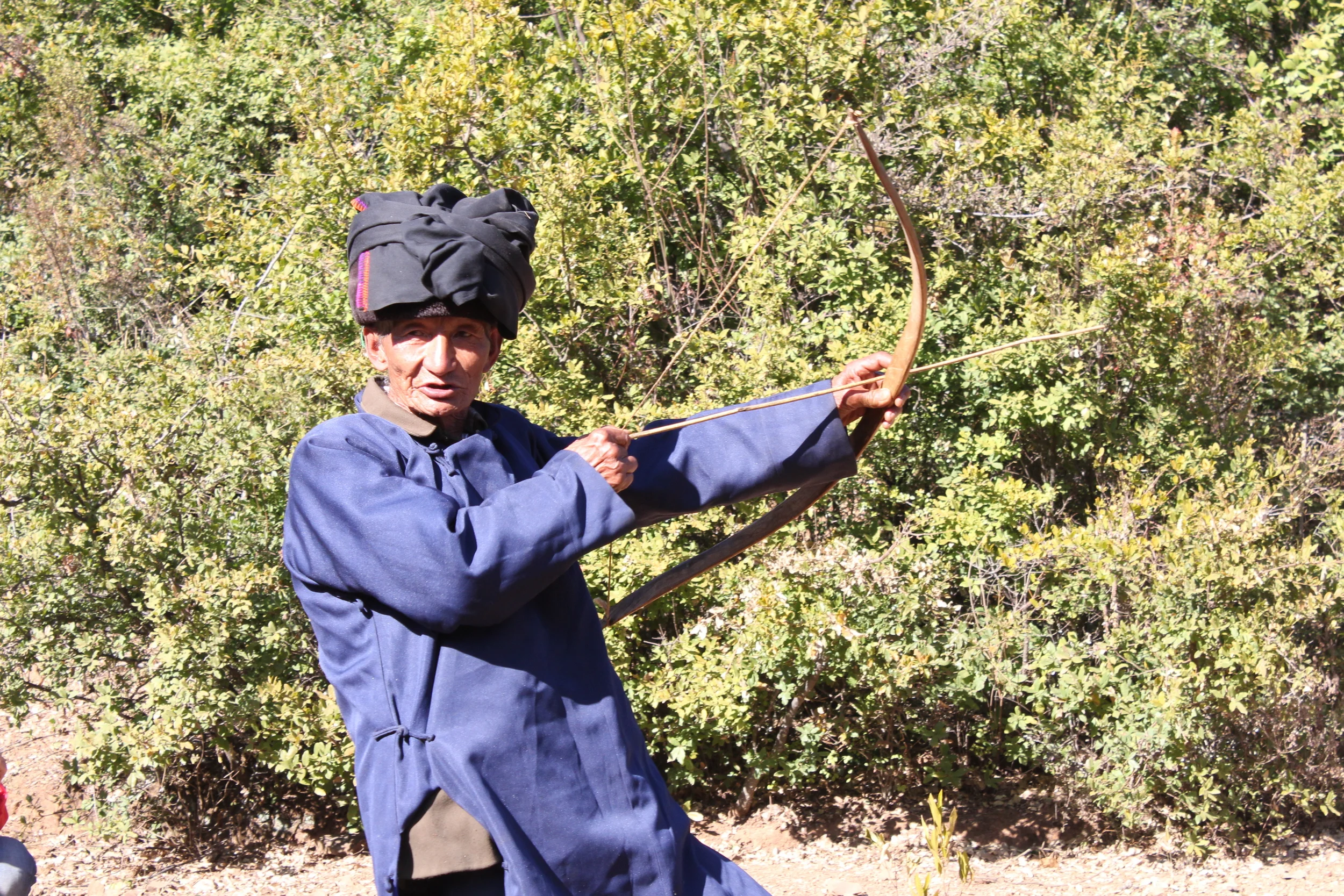about distortion 关于失真
旅游大巴沿崭新的昆明—丽江—香格里拉高速路飞快行驶,车上无意间瞥向窗外的乘客感到,眼前那坐落在墨兰的湖泊与闪耀的雪峰之间,终年繁花似锦硕果累累的拉市海宛若一片世外桃源。
下车,跨上一匹小马,沿灰扑扑的公路惬意骑行之后,这份田园牧歌般的诱惑一定还在发酵——否则是什么吸引游客纷至沓来,将著名的丽江古城抛在脑后?要知道在那里,骑马和为苹果手机充电一样不成问题。
逗留片刻,稍事观察,你会发现脚下的土地被践踏的痕迹,尤其那些来自你自己的脚印。我们能觉察到旅游业给这里的环境与文化带来的巨大破坏,但同时,纳西传统文化也正经历着自体的蜕变。简言之,往昔的变迁与今日的变迁不可同日而语。如今,一切差异均被一个上位的系统整合,这片广袤的异乡早已被纳入“同一个世界,同一个梦想”。随着这种整合愈演愈烈,田地与墓园被柏油填平,采石场大卡车取代肩挑马驮,耕地变身马场,那些我们假以定义自身身份的传统正被逐渐遗忘。
因此,所有关乎传统的思量均源自一种失真。那些向祖母学习传统菜谱的年轻人,那些不从商业投机的角度来衡量土地价值的农民正在力图扭转已成社会共识的发展态势。
从2013年11月至2014年3月,作为丽江工作室进驻项目的一部分, “失真之失真”计划研究了纳西族或许未被记载,却被智慧的头脑、饱经风霜的双手所实践的技能。然而我们的这份记录本身亦是对那些口传身授的习俗的失真。这种失真甚至得寸进尺,塑造出与真正的起源相悖的起源。
这项计划包括邀请“新农民”加入实践。2014年2月,一群来自日本的农民艺术家与“失真之失真”项目组一同前往宝山乡悟母村。在这个能够俯瞰金沙江的遥远村落,文革中消失的传统东巴仪式重获新生。尽管有着上述的各种改变,这些“新农民”们仍然目睹了在自己的国家已被工业屠宰场替代的古老的宰杀仪式。
权力与价值同特定的土壤相联,历经世代的发展,倾向于在外界的扭曲之下做出改变;但它们同样也能被外界所吸纳,传承下去,重新锤炼出某种独特性。
-Michael Eddy
周巧翻译
To the casual observer, passing through on a tour bus speeding along the brand new highway that traces the southeastern hills and connects Lijiang to Shangrila and Kunming, the idyllic valley of Lashihai might appear as a primordial realm, situated between a cobalt lake and a shining glacial peak, perennial in bloom and in harvest.
Surely this allure even persists after alighting from the bus and mounting a pony for a pleasure ride along a dusty road—otherwise what would draw the countless tourists to this place, when in the middle of the Lijiang Old Town, one can find plenty of horses and never worry about lack of outlets to charge one's iPhone?
Stay just a little bit longer, keep observant, and one notices all manner of alterations underfoot, not least of which is one's own footprint. One could remark that the damage done by tourism to these surroundings and this culture is downright deplorable; but at the same time, the local, traditionally Naxi culture is going through its own interrelated changes. Generally speaking, what was different is now different to itself and is becoming the same, adopting the same generic, uprooting systems that have transformed these vast and differentiated regions into One World, One Dream. And as this direction intensifies, the paving of fields and graveyards, the swapping of packhorses for quarry trucks and ploughs again for ponies, the old ways that lend us our identities are then gradually forgotten.
Therefore, those concerned with tradition start with distortion. The young people who would learn the recipes of their grandmothers, and who regard the value of the soil with more than its speculative appraisal, are changing a direction, distorting a momentum that has naturalized into a societal consensus.
As part of a residency at Lijiang Studio from December 2013 to March 2014, the Distortion of Distortion project investigated the skills and practices that hadn't necessarily been written down, but that have been carried in the weathered hands and earthy wisdom of the people of Lashihai. However, writing these down is itself a kind of distortion of customs passed on orally or through gesture. So distortion goes a step further, and invents possible origins that defy origin.
Part of this project involved inviting "new farmers" to come and participate. In February, a group from Japan travelled with the Distortion of Distortion project to the remote mountain village of Wumu overlooking the Yangtze River, where the Dongba cult's rituals are returning to memory after being stamped out since the Cultural Revolution. Despite all the aforementioned changes, these “new farmers” could witness older forms of ritual animal slaughter that the walls of industrial abattoirs in their own country have removed from social practice.
Powers and values linked to particular places, nurtured across generations, are prone to change as outsiders distort them; but they can also be absorbed by the outsider, carried onward, and honed again toward the particular.
-Michael Eddy
